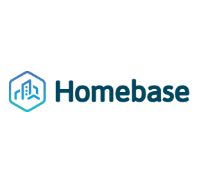Open standards are critical to the development of IoT: Insights from Silver Spring Networks
 Matt Smith, Senior Director of Utility Solutions at Silver Spring Networks, provides insight on the major challenges for this year and the future before speaking at Smart Energy Summit:
Matt Smith, Senior Director of Utility Solutions at Silver Spring Networks, provides insight on the major challenges for this year and the future before speaking at Smart Energy Summit:
What are the major challenges that your business must address in 2016? In 2020?
One of the biggest challenges – and opportunities – as billions and billions more devices come online is ensuring ubiquitous and reliable ‘thing’ connectivity. As the IOT hype grows, many will find that there are products that have difficulty maintaining a reliable connection. Unlike consumer products such as connected toothbrushes or FitBits, connecting critical infrastructure – such as solar inverters, storage, and home energy devices – requires industrial-strength, highly reliable two-way communications. Any interruption to the connectivity can impact the efficiency, comfort and even health and safety of our communities and the electrical grid.
The good news is that the utility market already has a framework for IOT applications. Smart grid devices were one of the first IOT deployments at scale and today we find many mature programs. As with most technologies that are successful over time, open standards are critical to that success and the development of IOT. Bets placed on proprietary technology have time again failed and proved that they are on wrong side of history. Moreover, the technology requirements by design need to be reliable, redundant, scalable and secure, or risk the entire IOT enterprise. Many existing smart energy products have attempted to rely on consumer supplied broadband connections for reliable connectivity. This has proven at best extremely costly to maintain, and at worst, with 20% or more devices failing to communicate.
It’s for these reasons that we are bringing the same technology that has already connected over 22 million devices across 2 million square miles on five continents and covering nearly 80 million people, and offering an IP-dial tone based network called StarfishTM that will first be deployed in San Jose, Chicago, San Antonio, Copenhagen, Glasgow, Bristol and in Kolkata, India. Not only will developers be able to access a highly-reliable proven IOT network to bring new applications and connected devices to the industry, but companies will be able to connect their own IOT devices to a public network that is independent of any utility.
Another major challenge is cellular technology obsolescence. History tells us that the cellular technology is turning over every 10-15 years, with older networks being sunsetted as newer technologies become available. This rapid pace of technology change often doesn’t match well with the lifespan of critical infrastructure technologies as many of these devices have a 20-year or longer lifecycle. Having to revisit a remote site prematurely just to retrofit your network gear adds significant costs to any deployment. Add up these costs over a fleet of 100K or even millions of devices, and the costs of managing this technology churn become a significant problem.
Silver Spring has solved this problem with a mesh + cellular solution that leverages cellular technology for backhaul purposes and leverages mesh to connect most endpoints directly. Through this approach, only a small number of backhaul points need to be changed out when cellular technologies transition, therefore keeping the costs low and manageable.
We look forward to the discussion on how to evolve the smart energy IOT industry by providing innovative network solutions that are reliable, scalable and secure.
Matt Smith will be speaking on the panel session "Solar Industry: Integration, Competition, and Impact on IoT" on Wednesday, February 24 at 8:45am. Other speakers on the panel include Austin Energy, Enphase, SunPower, and Vivint Solar.
For more information this year's Smart Energy Summit: Engaging the Consumer, visit www.ses2016.com.
Next: Tendril: Utilities need to innovate in a way that is both environmentally conscious and economically healthy
Previous: SMUD: The entire energy community will have to work together to unlock new value




 Matt Smith, Senior Director of Utility Solutions at Silver Spring Networks, provides insight on the major challenges for this year and the future before speaking at
Matt Smith, Senior Director of Utility Solutions at Silver Spring Networks, provides insight on the major challenges for this year and the future before speaking at 











